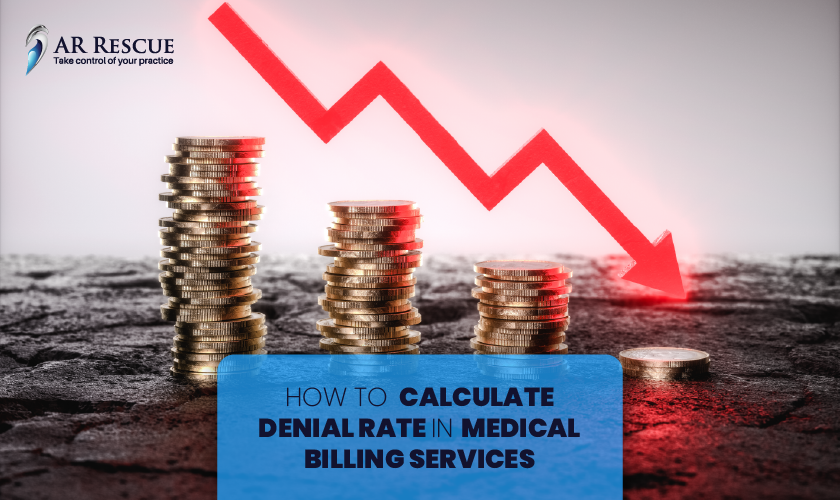The denial rate calculation is an essential part of improving revenue cycle management.
Let us explain the denial rate and walk you through the steps to calculate the denial rate in medical billing services.
What Is Denial Rate?
Regarding medical expenses, the denial rate refers to the percentage of payments denied by insurance companies or other payors.
Denied and non-payment claims are rejected because of errors or incomplete information.
A high denial rate can have a very significant impact on a healthcare provider’s bill when a large number of claims are not paid.
It is, therefore, essential to monitor and reduce the number of denials to maintain the financial stability of your practice.
Why Is Calculating Denial Rate Important?
It’s essential to calculate the denial rate for a few reasons:
- Healthcare providers and billing processors can monitor denials to pinpoint specific billing issues—such as legal errors, missing documentation, and eligibility issues.
- A lower denial rate is a sign of healthy cash flow, which means more cases are resolved in the first round, improving revenue. In addition, the need for appeals and reassignments is reduced.
- Proper statistics and reporting of denial rates are essential to compliance.
Now that we know the importance of calculating the denial rate, let’s look at how to calculate it.
How to Calculate Denial Rate
Here’s the formula to check the denial rate:
Denial Rate (%) = (Number of Denied Claims / Total Number of Claims Submitted) x 100
This is how the process works:
1. Collect and gather data.
Collect the necessary data first. You will need:
- The total number of claim submissions during a selected period.
- Claims that were denied during the same period.
2. Calculate the denial rate.
Calculate the denial rate using the above formula.
You can divide the number of rejected claims by the total number of claims submitted and then multiply the result by 100 to get a percentage.
3. Look into it.
You can calculate the denial rate and analyze and interpret the results. Consider the following:
- Is the denial rate within an acceptable range? An industry standard suggests a denial rate of 5% or less. If it exceeds 10%, there could be an issue. Close to zero is a reasonable number.
- Know why denials are common. Are there any recurring concerns?
- Look at trends over time. Is the denial rate improving or decreasing?
What You Can Do to Reduce the Denial Rate
- Make sure your billing department is competent and well trained.
- Before submitting a claim, verify that patients are eligible that their insurance information is correct, and that there are no mistakes or errors.
- Documentation must be accurate and complete—make sure all documents are included.
- Update your medical codes.
- Regularly audit your billing process to find and fix problems.
- Set up a denial management system that’s connected to your RCM system.
- Make sure you have a strong appeal when you have to appeal a denial.
Bottom Line
How to calculate the denial rate in medical expenses is important. It helps healthcare providers and payment processors understand the issues that affect revenue.
You can improve revenue management and your financial health by following these steps.
If you need expert medical billing services with experience in reducing denial rates, contact AR Rescue.
We specialize in revenue cycle management to increase revenue and reduce denials.
FAQs
What are the benefits of reducing the denial rate?
Reducing the rejection rate improves your practice’s cash flow, increases the revenue, and reduces appeal costs. It can also enhance the performance and reputation of your healthcare institution.
How often should the denial rate be calculated?
The denial rate should be calculated regularly, such as monthly. Regular monitoring will help you discover trends, resolve issues quickly, and measure what’s working.
Can AR Rescue help with reducing denial rates?
Yes, we can increase your revenue while minimizing denials. Let’s discuss your needs in a consultation.

